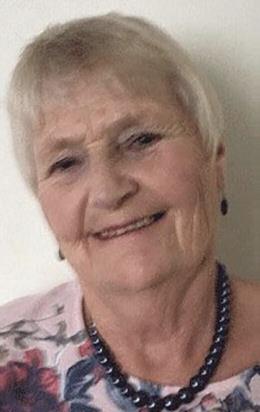
“He just collapsed to the floor … unconscious” by JUDITH BROOME
I WAS on holiday, staying in an entertainment complex and sitting with my son and other people watching a Euros football match on the big screen.
I turned round to get the attention of a waiter to bring us a drink, when a gentleman caught my eye. He was standing with his back to the bar, holding a tray of drinks — then he just collapsed on to the floor, the tray and its contents flying everywhere.
I immediately went over to him as he lay on the ground immobile; fearing he was lying on broken glass, I rolled him over and soon realised he was unconscious.
I could feel no pulse in his neck or wrist, I put my cheek to his mouth and could feel no breath. At this point I called out to the staff to call 999 for an ambulance, which they did.
I had noticed a defibrillator on the wall as I had come into the venue. I started chest compressions, but this did nothing, so I asked someone to bring over the defibrillator. I was feeling very apprehensive as I opened it, but to my great relief the moment I turned it on, I was told what to do.
I followed the instructions which were loud and clear, and I felt as if I had someone with me telling me exactly what to do. Nothing happened after the first shock, so I did chest compressions again, then another shock as the voice advised me. Then amazingly the man took a breath and opened his eyes. Soon after that the ambulance arrived. The man had suffered a cardiac arrest and the paramedics who treated him told me I had saved his life by using the defibrillator.
Please, anyone reading this, do not be scared of attempting to help someone who needs it, you cannot get it wrong. If the patient has a heartbeat the defibrillator will not work, so you will do no harm.
Judith, a former Trustee of Surrey Federation, was in the right place at the right time to save a life. She says: Don’t be afraid to help
So if you had to — could you do it? Don’t be scared! says HILARY BROOKS (Trustee and retired district nurse)
FOLLOWING news of the footballer whose life was saved on the field by use of a defibrillator, we have sought permission from the British Heart Foundation* to publish their instructions on the use of a defibrillator in an emergency.
You will only be able to do the best you can in any circumstance but you will vastly improve your knowledge and confidence if you watch the video on the BHF website — https://www.youtube.com/watch?v=YbjcCjSVNVUy
All defibrillators are self explanatory and difficult to misuse. Don’t be scared, be ready to help, after all you are a WI member!
If you come across someone who is unconscious, unresponsive, not breathing or not breathing normally, they’re in cardiac arrest. The most important thing is to call 999 and start CPR to keep the blood flowing to the brain and around the body. After a cardiac arrest, every minute without CPR and defibrillation reduces someone’s chance of survival by 10 per cent.
If you are on your own, don’t interrupt the CPR to go and get a defibrillator. If it’s possible, send someone else to find one, or shout for help while you continue CPR. When you call 999, the operator can tell you if there’s a public access defibrillator nearby.
To use a defibrillator, follow these simple steps:
Step 1: Turn the defibrillator on by pressing the green button and follow its instructions.
Step 2: Peel off the sticky pads and attach them to the patient’s skin, one on each side of the chest, as shown in the picture on the defibrillator.
Step 3: Once the pads have been attached, stop CPR and don’t touch the patient. The defibrillator will then analyse the patient’s heart rhythm.
Step 4: The defibrillator will assess whether a shock is needed and if so, it will tell you to press the shock button. An automatic defibrillator will shock the patient without prompt. Do not touch the patient while they are being shocked.
Step 5: The defibrillator will tell you when the shock has been delivered and whether you need to continue CPR.
Step 6: Continue with chest compressions and rescue breaths until the patient shows signs of life or the defibrillator tells you to stop so it can analyse the heartbeat again, or a paramedic arrives to take control.
DO YOU KNOW WHERE THE DEFIBRILLATOR/S IN YOUR VILLAGE OR TOWN ARE KEPT? IF YOU DON’T, FIND OUT!
back to News


